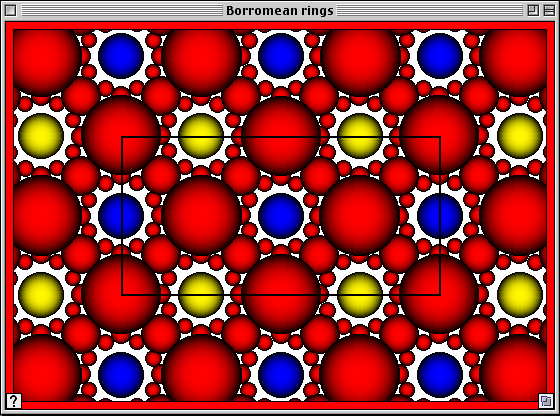SnapPea is free software designed to help mathematicians, in particular low-dimensional topologists, study hyperbolic 3-manifolds. The primary developer is Jeffrey Weeks,
Looks a lot like our three color operator.
At the core of SnapPea are two main algorithms. The first attempts to find a minimal ideal triangulation of a given link complement. The second computes the canonical decomposition of a cusped hyperbolic 3-manifold. Almost all the other functions of SnapPea rely in some way on one of these decompositions.This is still about Markov, which is hyperbolic. The minimal ideal triangulation is about finding the node on a Markov tree. That rectangle shown is the the color operator, the area that maximally makes 'white'. It is forced to Euclidean by two dimensional diagram, but is anti-parallel on the surface.
Moreover, he pointed out that , an approximation of the original Diophantine equation, is equivalent to with f(t) = arcosh(3t/2).[Basically I think this will be the same technique I outlined, find the appropriate spot on the Markov tree.
Hyperbolic 3–manifolds of finite volume have a particular importance in 3–dimensional topology as follows from Thurston's geometrisation conjecture proved by Perelman.
This hero was early, 1999. So all of this is real. One could take the SnapPea algorithm and find the closure of an immunity model, for example. This was derived for something called knot theory. More later on this.
Also, credit Quanta magazine for this. I never considered knot theory. But it is related. When I talk about deviations specified by Markov, I am talking about deviations from a plane, in essence. So any hyperbolic knots are projections of a closed curve onto 3D space, projected enough to separate the knot crossings. But we use geodesic knots, connect not continuously, but discrete chunks. The chunks defined because they have bound deviations from flat white which can only be managed in hyperbolic curvature.
But knot theory makes sense because we have three complete sequences that need matching, and the way we match is the same as coloring the sphere, which is the same as mapping three sequences into a closed curve in 3 space.
Anyway, all very interesting. So sandbox it mostly correct about all this. It is not a minor novelty, the whole theory fundamental to number theory, and thus to all the 3D systems.



No comments:
Post a Comment